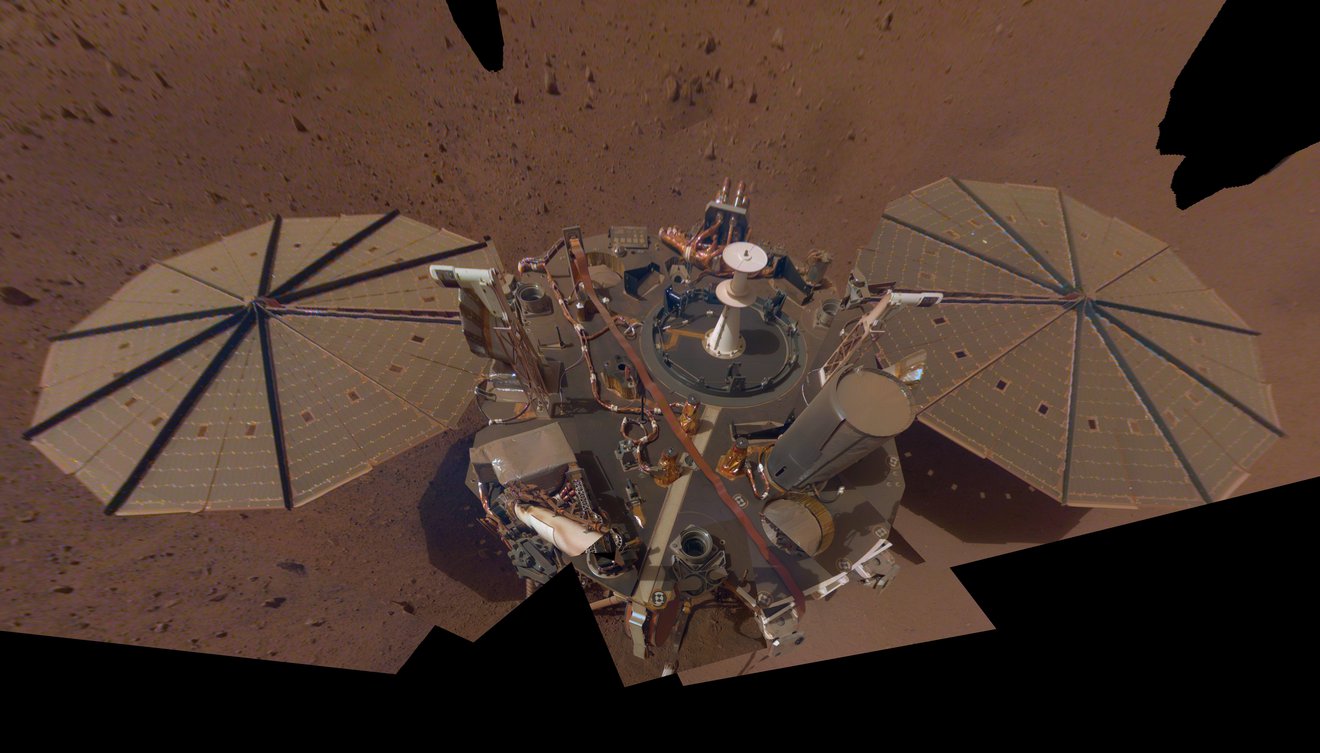NASA’s InSight lander has detected one of the most powerful and longest-lasting quakes on the Red Planet since the start of its mission. The big marsquake happened on Sept. 18 on Earth, which happened to coincide with InSight’s 1,000th Martian day, or sol since it landed on Mars.
The temblor is estimated to be about a magnitude 4.2 and shook for an unthinkable hour-and-a-half! For comparison, on Earth, most quakes last for just a few seconds, although two (one in 1960 and another in 2004) lasted for about 10 minutes. Scientists are still studying the data collected on this marsquake to determine why (and how) it endured for such a long time.
This big quake followed close on the heels of two other quakes that both took place on August 25 (on Earth) that had magnitudes of 4.2 and 4.1. The biggest previous quake InSight detected was a magnitude 3.7 quake in 2019.
InSight scientists also will be able to determine how far away the quake was from InSight. One of the August 25 quakes, the magnitude 4.2 event, occurred about 5,280 miles (8,500 kilometers) from InSight – the most distant temblor the lander has detected so far.
InSight’s Seismic Experiment for Interior Structure, or SEIS detects and studies seismic waves as they travel through the planet’s crust, mantle and core, which gives scientists a way to “look” inside Mars and learn more about its interior. The instrument, pictured below, is covered and protected by the domed Wind and Thermal Shield,

InSight is powered by solar panels, and thanks to a crazy maneuver earlier this year (read about it here) to help clear dust off the panels, InSight had enough power to detect the three big quakes, as well as stay warm enough to keep operating. The lander’s solar panels have outlasted the two-year prime mission they were designed for and are now powering the spacecraft through a two-year mission extension.
“If we hadn’t acted quickly earlier this year, we might have missed out on some great science,” said InSight’s principal investigator, Bruce Banerdt at the Jet Propulsion Laboratory (JPL). “Even after more than two years, Mars seems to have given us something new with these two quakes, which have unique characteristics.”
NASA says that relying on solar panels for power enables such missions to be as light as possible for launch and requires fewer moving parts – thus, fewer potential failure points – than other systems. Although it is one of most-asked questions about using solar panels on Mars, engineers say that equipping the spacecraft with brushes or fans to clear off dust would add weight and failure points.
Lead image caption: This selfie of NASA’s InSight lander is a mosaic made up of 14 images taken on March 15 and April 11 – the 106th and 133rd Martian days, or sols, of the mission – by the spacecraft Instrument Deployment Camera located on its robotic arm. Credit: NASA/JPL-Caltech
Source: JPL

